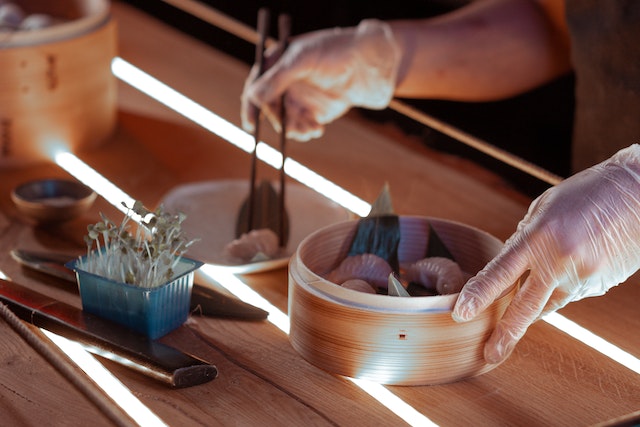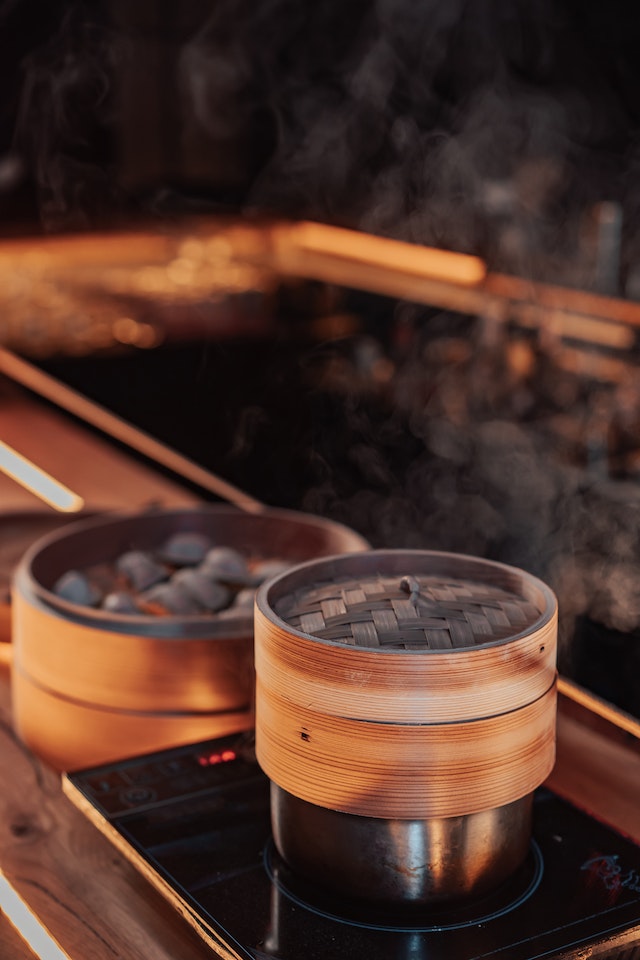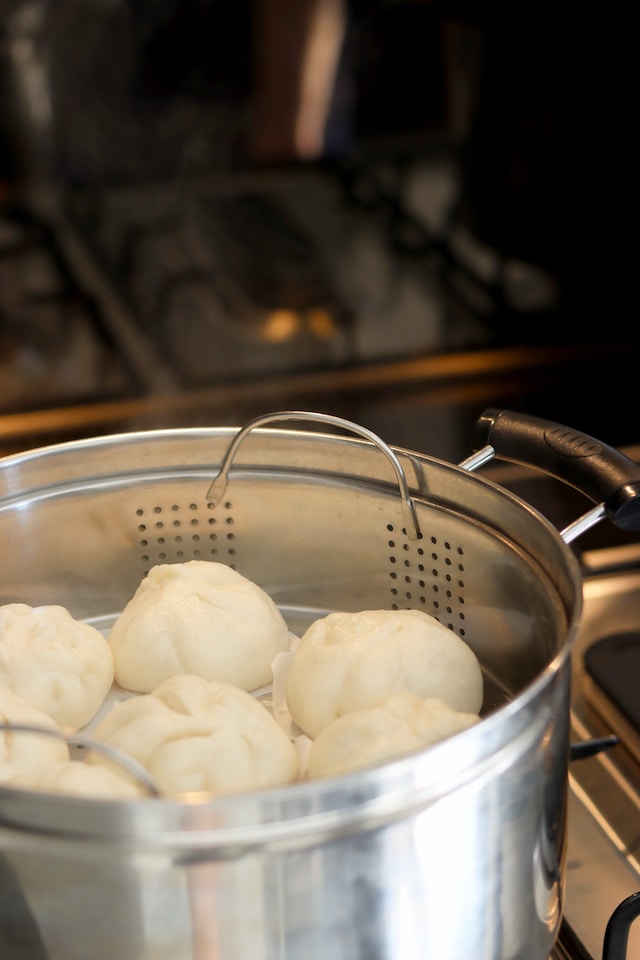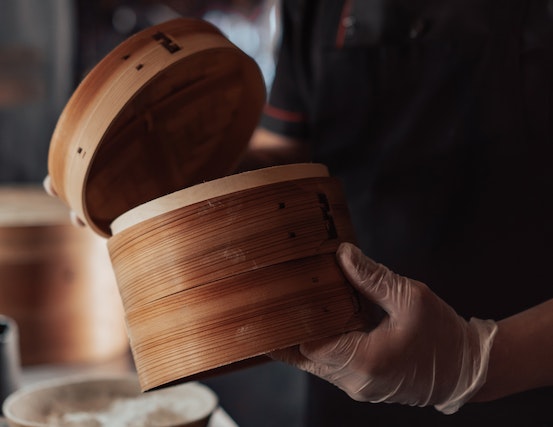
Steaming, a cooking method that has withstood the test of time, continues to rise in popularity today. With its simplicity and health benefits, steaming has become a go-to technique for those seeking nourishing and flavorful meals. By using the power of steam, this cooking method gently works its magic on a wide range of ingredients, from tender vegetables to delicaate seafood. In this article, we delve into the world of steaming, exploring its benefits, techniques, and the delicious creations it brings to our tables. So, let’s uncover the secrets behind this cooking method and discover the wonders it holds for our taste buds and well-being.
The Science of Steaming
While the sizzling sounds of a hot stir-fry tantalize our senses, there is another equally captivating cooking method that deserves our attention – the art of steaming. Steaming, like stir-frying, has its roots deeply embedded in the rich culinary traditions of Asia. This gentle and delicate technique allows ingredients to be cooked in their own natural juices, resulting in a harmonious and wholesome dining experience.
At its core, steaming is a simple yet profound process. It involves placing food on a perforated surface above a simmering liquid, often water or broth, allowing the steam generated to gently cook the ingredients. This method preserves the vitamins, minerals, and essential nutrients that would otherwise be lost through more rigorous cooking methods.
The magic of steaming lies in its ability to harness the power of heat and moisture, transforming humble ingredients into extraordinary culinary creations. As the steam circulates around the food, it gradually softens the texture, while still maintaining its vibrant colors and flavors. The gentle heat cooks the ingredients evenly, ensuring they retain their natural sweetness and tenderness.
Aside from its nutritional benefits, steaming also offers a variety of practical advantages. Its efficiency allows for multiple ingredients to be cooked simultaneously, saving both time and energy. The delicate process of steaming also requires minimal oil, making it an excellent choice for those seeking healthier alternatives.
Steaming Equipment
To embark on your steaming adventures, a few essential tools and equipment will be your trusted companions, guiding you towards culinary excellence. Though they may be simple, their role in achieving the perfect steamed dish is indispensable.
- Steamer Basket: A steamer basket, also known as a steaming rack or insert, is the cornerstone of the steaming process. This indispensable tool fits snugly into a pot or wok, elevating the ingredients above the simmering liquid, allowing the steam to circulate freely. The steamer basket typically features perforations or slits, ensuring that the steam can permeate the food, resulting in a gentle and even cooking process.
Bamboo Steamer: For those seeking a touch of authenticity, a bamboo steamer is a delightful addition to the kitchen. This traditional steaming vessel consists of two or more stacked baskets made from woven bamboo strips. Designed to fit snugly into a wok or pot, the bamboo steamer offers an aesthetically pleasing and eco-friendly option for the steaming connoisseur. The bamboo material absorbs excess moisture, preventing it from dripping onto the food, while still allowing the steam to penetrate the ingredients.

- Electric Steamer: For those looking for convenience and ease, an electric steamer is a modern option worth considering. These sleek and efficient devices feature multiple tiers or compartments, allowing you to steam different ingredients simultaneously. With adjustable temperature controls and built-in timers, electric steamers offer precise control over the cooking process, ensuring delicious results every time.
- Wok or Pot: A versatile wok or pot serves as the foundation for the steaming process. Its wide and shallow shape allows for ample space for the simmering liquid, while still accommodating the steamer basket or bamboo steamer. Opt for a wok or pot with a tight-fitting lid to maximize heat retention and create the perfect steam chamber.
- Lid: A well-fitting lid plays a vital role in steaming success. It traps the steam inside the wok or pot, creating an environment of moisture and heat that gently cooks the ingredients. Ensure that the lid has a sturdy handle and a steam vent to prevent excessive condensation from accumulating.
Types of Foods Ideal for Steaming
Steaming is a versatile cooking method that can be used for a wide variety of ingredients. From delicate seafood to hearty vegetables, the world of steaming offers endless possibilities for culinary creations. Here are some examples of foods that are ideal for steaming:
Seafood: Steaming is particularly well-suited for cooking delicate fish and shellfish. The gentle heat of the steam preserves the delicate flavors and textures of seafood, resulting in moist and tender dishes. From succulent steamed shrimp to flaky steamed salmon, the possibilities are abundant.
Vegetables: Steaming vegetables retains their vibrant colors and nutrients, making them a healthy and flavorful addition to any meal. From crisp broccoli florets to tender asparagus stalks, steamed vegetables retain their natural sweetness and retain a satisfying crunch.
Dumplings: Steaming is a popular method for cooking dumplings, allowing them to cook gently without losing their shape or texture. Whether filled with savory meats, vegetables, or even sweet fillings, steamed dumplings are a delicious treat.
Rice and Grains: Steaming is an excellent way to cook rice and grains, resulting in fluffy and flavorful results. From fragrant jasmine rice to nutty quinoa, steaming ensures even cooking and perfect texture.

Poultry and Meats: Steaming is a fantastic way to cook lean cuts of poultry and meats, as it helps to retain their natural juices and tenderness. Whether it’s tender steamed chicken breast or succulent steamed pork, the gentle heat of steam ensures a moist and flavorful outcome.
Desserts: Yes, even desserts can be steamed! Steaming allows for the creation of moist and decadent treats like steamed puddings, cakes, and custards. The steam infuses the desserts, resulting in a rich and velvety texture.
Each of these food categories offers a unique opportunity to explore the world of steaming. Experiment with different flavors, seasonings, and combinations to create your own steamed masterpieces.
How to Steam Food
Steaming food is a simple yet delicate process that requires attention to detail. With the right techniques, you can achieve perfectly steamed dishes that are bursting with flavor and nutrition. Here are the steps to steam food:
1. Prepare your ingredients: Clean and trim your vegetables, rinse seafood, and marinate meats if desired. It’s essential to have everything ready before you start steaming.
2. Choose the right equipment: Depending on your preference, choose between a steamer basket, bamboo steamer, or electric steamer. Place it in a wok or pot that has a tight-fitting lid.
3. Add liquid: Pour water, vegetable broth, or any flavorful liquid into the wok or pot. The level of the liquid should be below the surface of the steamer basket or bamboo steamer.
4. Arrange the ingredients: Place the ingredients in a single layer on the steamer basket or bamboo steamer. Make sure not to overcrowd them to allow steam to circulate evenly.
5. Check the steam: Turn the heat to medium-high and cover the wok or pot with the lid. Allow the steam to build up for a few minutes until it starts escaping from the lid’s steam vent.
6. Adjust the heat: Once the steam is escaping, reduce the heat to medium-low or as needed to maintain a gentle simmer. Too much heat can overcook the ingredients, so it’s crucial to find the right balance.
7. Steam time: The cooking time varies depending on the ingredients and their size. Generally, vegetables take 5-10 minutes, seafood around 10 minutes, and meats around 20-30 minutes. Use a fork or the tip of a knife to check for doneness.
8. Serve and enjoy: Carefully remove the steamed ingredients from the steamer basket or bamboo steamer and transfer them to a serving dish. Add seasonings, herbs, or sauces according to taste. Steam-cooked dishes are delicious on their own, but you can also pair them with rice or noodles for a complete meal.
Remember that steaming is a delicate cooking method, so it’s essential to monitor the process closely. Oversteaming can result in mushy textures, while understeaming may leave the ingredients raw. With practice and patience, you’ll find the perfect steaming times for your favorite recipes.

Creative Steaming Recipes:
Steamed Asian Fish Parcels:
Ingredients:
- 4 white fish fillets (such as cod or halibut)
- 2 tablespoons soy sauce
- 1 tablespoon sesame oil
- 1 tablespoon rice vinegar
- 1 teaspoon grated ginger
- 2 garlic cloves, minced
- 1 red chili, sliced (optional)
- 4 green onions, sliced
- Fresh cilantro leaves, for garnish
Instructions:
1. Preheat your steamer. In a bowl, combine soy sauce, sesame oil, rice vinegar, grated ginger, minced garlic, and sliced chili (if using).
2. Place each fish fillet on a square of parchment paper. Spoon the soy sauce mixture evenly over each fillet.
3. Sprinkle sliced green onions over the fish. Fold the parchment paper to seal the fish, creating a parcel.
4. Place the fish parcels in the steamer and steam for about 10-12 minutes, or until the fish is opaque and flakes easily with a fork.
5. Carefully remove the parcels from the steamer and transfer them to a serving dish. Garnish with fresh cilantro leaves.
6. Serve the steamed fish with steamed rice and sautéed vegetables for a complete and flavorful meal.

Steamed Vegetable Dumplings:
Ingredients:
- 1 cup finely chopped vegetables (carrots, cabbage, mushrooms, etc.)
- 1 garlic clove, minced
- 1 teaspoon grated ginger
- 2 green onions, sliced
- 1 tablespoon soy sauce
- 1 tablespoon sesame oil
- 24 round dumpling wrappers
- Soy sauce or dipping sauce, for serving
Instructions:
1. In a bowl, combine chopped vegetables, minced garlic, grated ginger, sliced green onions, soy sauce, and sesame oil. Mix well.
2. Place a spoonful of the vegetable mixture in the center of each dumpling wrapper. Wet the edges of the wrapper with water and fold in half, sealing the dumpling tightly.
3. Arrange the dumplings in a steamer basket, making sure they don’t touch each other. Steam for about 12-15 minutes, or until the wrappers are tender and the dumplings are cooked through.
4. Remove the steamed dumplings from the steamer and serve them hot with soy sauce or your favorite dipping sauce. Enjoy!

Steamed Coconut Custard:
Ingredients:
- 1 can (400ml) coconut milk
- 4 eggs
- 1/4 cup sugar
- 1/2 teaspoon vanilla extract
- Shredded coconut, for garnish
Instructions:
1. In a mixing bowl, whisk together the coconut milk, eggs, sugar, and vanilla extract until well combined.
2. Pour the mixture into individual heatproof ramekins or bowls, filling them about three-quarters full.
3. Place the ramekins in a steamer and steam for about 20-25 minutes, or until the custard is set and jiggles slightly in the center.
4. Carefully remove the ramekins from the steamer and let them cool to room temperature.
5. Sprinkle shredded coconut over the custards as a garnish.
6. Serve the steamed coconut custard chilled or at room temperature for a delightful and creamy dessert.
These creative steaming recipes showcase the versatility and deliciousness that can be achieved through the gentle cooking method of steaming. Whether you’re steaming fish, dumplings, or desserts, the results are sure to be mouthwatering and nutritious. So, embrace the art of steaming and let your culinary creativity soar!
